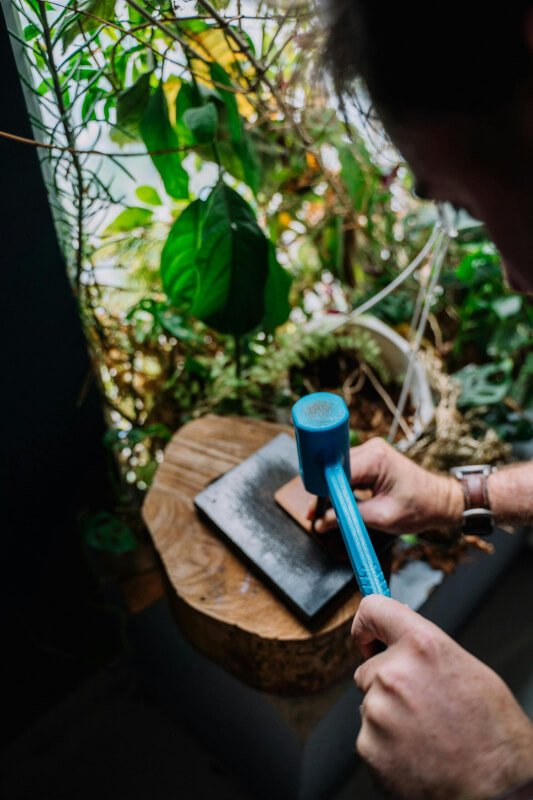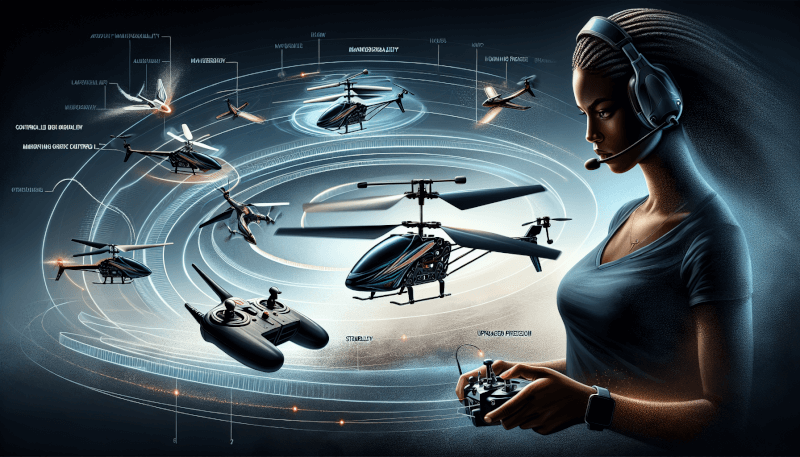Are you ready to take your RC heli piloting skills to the next level? Look no further! In this article, we will explore the best ways to improve your RC heli piloting skills. Whether you’re a beginner or an experienced pilot, these tips and tricks are sure to help you enhance your flying abilities and have a blast with your RC helicopter. So grab your remote control, buckle up, and get ready for an exhilarating ride through the world of RC heli piloting!
1. Understanding Your RC Heli
1.1 Know the Basic Components
To effectively pilot an RC helicopter, it is crucial to have a good understanding of its basic components. These include the main rotor, tail rotor, landing gear, and various electronic components such as the receiver and transmitter. Familiarize yourself with each part and its function to better comprehend the mechanics of your RC heli.
1.2 Learn about Different Types of RC Helicopters
There are various types of RC helicopters available, each with its own unique characteristics and flight capabilities. Some common types include coaxial helicopters, fixed-pitch helicopters, collective-pitch helicopters, and scale models. By learning about these different types, you can choose the one that suits your preferences and skill level, allowing you to gain more control and confidence in your piloting abilities.
1.3 Familiarize Yourself with the Controls
Before taking flight, it’s essential to become familiar with the controls of your RC heli. The most basic controls include throttle, cyclic, and tail controls. Throttle control determines the speed of the rotor blades, while cyclic control adjusts the angle of the rotor blades during flight. The tail control, on the other hand, enables you to control the yaw or the turning movement of the helicopter. Understanding how these controls work and practicing with them will lay a solid foundation for your piloting skills.
2. Mastering the Fundamentals
2.1 Learn Proper Throttle Control
One of the fundamental skills to master is throttle control. It is crucial for maintaining the altitude and stability of your RC heli during flight. Practice adjusting the throttle smoothly to achieve a consistent altitude. Gradually increase or decrease the throttle to maintain a steady flight path. With time and practice, you’ll be able to achieve precise throttle control, resulting in smoother flights and better control over your helicopter.
2.2 Focus on Maintaining Altitude
Maintaining a stable altitude is crucial for all flights. By keeping a consistent altitude, you can better control your RC heli’s movements and perform various maneuvers with confidence. Pay attention to the throttle control and make small adjustments to maintain a steady height. As you gain experience, you’ll be able to anticipate altitude changes and make smoother adjustments, enhancing your overall piloting skills.
2.3 Practice Smooth and Precise Hovering
Hovering is another fundamental skill that all RC heli pilots should strive to master. It involves keeping the helicopter in a stable position while airborne. Practice maintaining a hover at different altitudes, paying attention to the cyclic and tail controls to keep the helicopter in position. Smooth and precise hovering requires a delicate touch and an understanding of the controls. By practicing this maneuver regularly, you’ll improve your control skills and prepare yourself for more complex flight maneuvers.

3. Building a Solid Foundation
3.1 Start with Simple Flight Maneuvers
Once you have a good grasp of the basics, it’s time to start building a solid foundation by practicing simple flight maneuvers. Start with maneuvers such as gentle turns and climbs. Gradually increase the complexity of the maneuvers as you become more comfortable and confident. Remember to focus on maintaining control and stability throughout each maneuver. By mastering these simpler flight techniques, you’ll develop the necessary skills to progress to more advanced maneuvers.
3.2 Perfect Your Takeoff and Landing Techniques
Takeoff and landing are essential aspects of every RC helicopter flight. Practice smooth and controlled takeoffs, ensuring that the helicopter lifts off steadily without jerky movements. Similarly, work on perfecting your landing techniques by gradually reducing the throttle and gently touching down. Pay attention to your heli’s position and adjust the cyclic and tail controls as necessary to ensure a stable landing. With consistent practice, you’ll be able to execute takeoffs and landings with precision and confidence.
3.3 Work on Basic Turns and Forward Flights
Mastering basic turns and forward flights is crucial for expanding your flying skills. Practice making smooth and coordinated turns, ensuring that the helicopter maintains its stability throughout the maneuver. Gradually increase the speed and complexity of the turns as you gain confidence. Additionally, focus on flying your heli in a straight line, improving your control and precision in forward flights. Building a strong foundation in these basic maneuvers will pave the way for more advanced flying techniques.
4. Enhancing Your Control Skills
4.1 Practice Coordinated Movements
Coordinated movements are essential for advanced maneuvering and precise control of your RC helicopter. This involves smoothly integrating throttle, cyclic, and tail inputs to achieve desired flight patterns. Practice combining these controls to execute coordinated movements such as figure eights and coordinated rolls. By improving your coordination skills, you’ll be able to perform complex maneuvers with ease and confidence.
4.2 Experiment with Different Flying Modes
Many RC helicopters offer various flight modes that cater to different skill levels and piloting preferences. Experiment with different flying modes to find the one that suits your needs. Beginner modes usually provide stabilized flight and limited maneuverability, ideal for novice pilots. As you progress, you can switch to more advanced modes that offer greater control authority, enabling you to perform aerobatic maneuvers and fly in challenging conditions. Take the time to familiarize yourself with these different modes to enhance your control skills.
4.3 Improve Your Orientation Skills
Maintaining spatial awareness and orientation is crucial during RC heli flights. Improve your orientation skills by practicing hovering and maneuvering in different orientations—nose-in, tail-in, side-in, and inverted. By training yourself to maintain control and awareness in various orientations, you’ll be better prepared to handle different flight scenarios and execute complex maneuvers confidently.

5. Developing Advanced Techniques
5.1 Challenge Yourself with Advanced Maneuvers
Once you have gained proficiency in the basic maneuvers, it’s time to challenge yourself with advanced techniques. Push your boundaries by attempting more advanced maneuvers such as stall turns, split S, and pirouettes. These maneuvers require precise control and coordination of the RC heli. Practice each maneuver individually, gradually building up your skills and confidence. As you become more comfortable, try combining multiple maneuvers into a seamless routine, showcasing your piloting abilities.
5.2 Learn Aerobatic Maneuvers like Loops and Rolls
Aerobatic maneuvers add excitement and adrenaline to RC heli flying. Learn popular aerobatic maneuvers such as loops, rolls, and inverted flight. Each maneuver requires a careful understanding of throttle, cyclic, and tail controls to execute smoothly. Start by practicing these maneuvers at a safe altitude, gradually refining your technique and control. With dedication and practice, you’ll be able to perform dazzling aerobatic displays that showcase your skill and precision.
5.3 Try Inverted Flights and 3D Flying
For the most daring and adventurous RC heli pilots, inverted flights and 3D flying are the ultimate challenges. Inverted flight involves flying your heli upside down, while 3D flying incorporates complex maneuvers such as tic-tocs and chaos. These advanced techniques require a high level of skill, control, and concentration. Take your time to build up to these maneuvers, focusing on mastering each component before attempting them. With patience and practice, you’ll be able to push the limits of your piloting skills with inverted flights and 3D maneuvers.
6. Understanding Flight Dynamics
6.1 Learn about Pitch, Roll, and Yaw
To truly understand your RC heli’s flight dynamics, it is essential to familiarize yourself with the concepts of pitch, roll, and yaw. Pitch controls the upward and downward movement of the helicopter, while roll controls its side-to-side movement. Yaw, on the other hand, determines the helicopter’s left and right rotation. By studying and practicing these fundamental concepts, you’ll gain a deeper understanding of how to manipulate these controls to achieve precise and desired flight movements.
6.2 Understand the Importance of Center of Gravity
The center of gravity (CoG) plays a vital role in the stability and maneuverability of your RC helicopter. Understanding and properly managing the CoG is crucial for achieving optimal flight control. Make sure to balance the weight distribution of your heli by adjusting battery placement and other components. By keeping the CoG in the correct position, you’ll enhance stability and overall performance during flight.
6.3 Study the Effect of Wind and Other Environmental Factors
Environmental conditions such as wind can greatly affect the flight characteristics of your RC heli. Study the impact of wind on your heli’s stability and adapt your piloting techniques accordingly. Practice flying in different wind conditions to improve your ability to control and navigate your heli. Additionally, consider other environmental factors such as temperature and humidity, as these can also impact flight performance. By being aware of these factors, you’ll be better equipped to anticipate and adapt to changing conditions during your flights.

7. Improving Your Spatial Awareness
7.1 Practice Flying in Different Locations and Conditions
To improve your spatial awareness and adaptability as an RC heli pilot, it’s important to fly in different locations and under varying conditions. Fly in open fields, parks, or dedicated RC flying areas to experience different terrain and flying environments. This will help you develop a sense of spatial awareness and adjust to different obstacles and challenges. Fly during different times of the day and in various weather conditions, allowing you to become comfortable and confident flying in different scenarios.
7.2 Develop a Good Sense of Depth Perception
Depth perception is crucial for accurately judging distances and object placement during RC heli flights. Develop your depth perception skills by practicing landing on specific targets or flying through designated obstacles. By honing your ability to judge distances and respond accordingly, you’ll enhance your spatial awareness and improve your piloting skills.
7.3 Use Visual Cues to Improve Spatial Awareness
Visual cues can be extremely helpful in improving your spatial awareness while flying an RC helicopter. Establish visual markers or points of reference in your flying area to aid in maintaining orientation and determining distance and altitude. These markers could include trees, buildings, or other distinct features. By using visual cues, you’ll be able to better gauge your heli’s position and make more precise adjustments during flight.
8. Utilizing Flight Simulators
8.1 Invest in a Quality RC Helicopter Flight Simulator
One of the most effective tools for improving your RC heli piloting skills is a high-quality flight simulator specifically designed for RC helicopters. Invest in a reliable simulator that accurately replicates the behavior and flight dynamics of an RC heli. Simulators provide a safe and cost-effective way to practice various maneuvers, learn new techniques, and refine your control skills.
8.2 Take Advantage of the Simulator’s Training Features
Flight simulators offer a range of training features that can greatly enhance your learning experience. Utilize features such as flight training programs, missions, and tutorials to systematically improve your piloting skills. Take the time to practice specific maneuvers, master control inputs, and receive feedback on your performance. Flight simulators allow for repetitive practice without the risk of damaging your actual RC heli, providing an excellent platform for skill development.
8.3 Use Simulators to Practice New Techniques and Maneuvers
One of the key benefits of using a flight simulator is the ability to practice new techniques and maneuvers in a controlled environment. Experiment with advanced maneuvers or challenging flight scenarios that you may not yet be ready to attempt in real-life flying. By using the simulator to hone your skills and master new techniques, you’ll increase your confidence and competence as an RC heli pilot.

9. Joining RC Heli Clubs and Communities
9.1 Seek Guidance from Experienced Pilots
Joining an RC heli club or community can provide invaluable guidance and support for your piloting journey. Seek advice and mentorship from experienced pilots who can share their knowledge and expertise. These seasoned pilots can provide valuable tips, troubleshooting assistance, and guidance on improving your skills. Connecting with others who share the same passion for RC helis can be a great source of motivation and inspiration.
9.2 Participate in Group Training Sessions
Many RC heli clubs organize group training sessions where pilots can come together to learn and grow collectively. Take advantage of these opportunities to refine your piloting skills in a group setting. Participating in group training sessions allows you to observe and learn from other pilots, as well as receive real-time feedback on your flying. The camaraderie and support from fellow enthusiasts can help accelerate your progress as a pilot.
9.3 Learn from the Shared Knowledge and Experiences
Being part of an RC heli club or community provides access to a wealth of shared knowledge and experiences. Engage with other pilots, ask questions, and actively participate in discussions. Learn from the experiences and challenges faced by other pilots and apply those lessons to your own flying. By tapping into the collective wisdom of the community, you’ll continuously expand your understanding and improve your skills as an RC heli pilot.
10. Continuous Learning and Practice
10.1 Stay Updated with New Technologies and Advancements
The field of RC helicopters is constantly evolving, with new technologies and advancements being introduced regularly. Stay updated with the latest developments in the industry, including improvements in flight controllers, batteries, and rotor designs. By staying informed, you can take advantage of new technologies that enhance your heli’s performance and optimize your piloting experience.
10.2 Set Goals and Track Your Progress
Setting goals and tracking your progress is essential for continuous improvement in any pursuit. Define specific objectives for your RC heli piloting journey, such as mastering certain maneuvers or achieving specific flight times. Regularly evaluate your progress and adjust your goals as necessary. By setting clear goals and monitoring your development, you’ll have a clear roadmap for improvement and maintain motivation along the way.
10.3 Dedicate Regular Time for Practice and Improvement
Consistent practice is the key to refining your piloting skills and becoming a proficient RC heli pilot. Dedicate regular time for practice, ensuring that you have uninterrupted sessions to focus on your flying. Prioritize quality practice over quantity, paying attention to each flight and analyzing your performance. Continuous commitment to practice will yield steady progress and contribute to your growth as a skilled RC heli pilot.
In conclusion, improving your RC heli piloting skills requires a combination of knowledge, practice, and dedication. Understanding the components and controls of your RC heli, mastering the fundamentals, building a solid foundation, enhancing your control skills, developing advanced techniques, understanding flight dynamics, improving spatial awareness, utilizing flight simulators, joining RC heli clubs, and continuous learning and practice are all key aspects to becoming a skilled pilot. Embrace the journey, stay focused, and enjoy the exciting world of RC helicopter flying!



